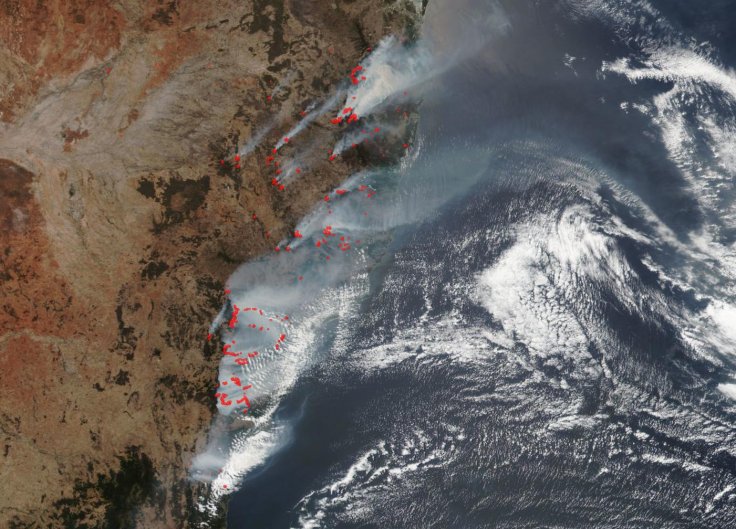Satellites hovering thousands of kilometres from Earth were able to capture photos of the ongoing destruction caused by the bushfires in Australia.
The latest photos showing Australia's bushfires from space were taken by the satellites of the Japan Meteorological Agency and the European Space Agency (ESA). The photos show different angles of the ongoing disaster currently destroying large parts of Australia.

Satellite Images Of Bushfires in Australia
The first image was taken last week by the Japan Meteorological Agency's Himawari-8 satellite. In the photo, which features a wide shot of Earth, a loud cloud of smoke can be seen near Australia. Based on the image, the plumes of smoke generated by the bushfires in Australia have gotten so big that they are almost half as large as Europe, Business Insider reported.
The other satellite image was shared via Twitter by the Copernicus Emergency Management Service in Europe. According to the agency, the photo was taken by the ESA's Sentinel 2 satellite. It features a large portion of New South Wales being consumed and destroyed by the thick smoke and ongoing bushfires.
As many of us in the #EU are getting ready to celebrate #NYE2020, our thoughts are with all those affected by disasters, with refugees, with firefighters, emergency managers, paramedics etc. that are on duty in 🇦🇺 & all over#Sentinel2🇪🇺🛰 image of the Bateman Bay #NSW area 31/12 pic.twitter.com/L9Do8wKRPc
— Copernicus EMS (@CopernicusEMS) December 31, 2019
Current Condition of The Bushfires
As seen in both satellite images, the bushfires have already destroyed various regions in Australia. As of this writing, the natural disaster has already burned down about 14 million acres of land. In New South Wales and the Australian Capital Territory, almost 1,600 homes have already been destroyed by the fires.
According to local experts, the bushfires are expected to continue since the country is still experiencing its summer season, which occurs from December to February. Also, since Australia is currently in the midst of a record-setting drought, the dry and hot conditions could generate more bushfires within the coming weeks or even months.
"Warmer than average and drier than average is the trend that looks to be continuing," meteorologist Tom Hough said according to Daily Mail. "Based off the climate outlooks it doesn't look like we're going to see any significant rainfall."









